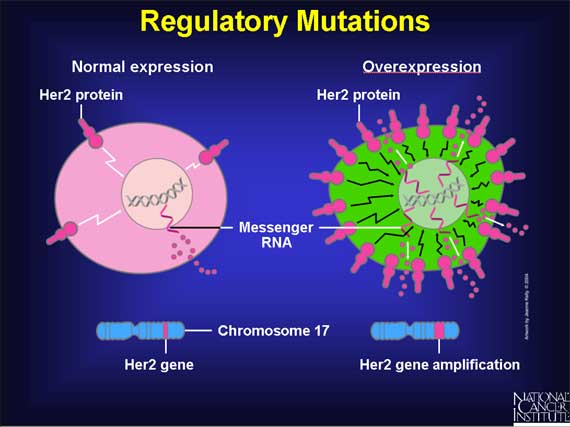|
Although mutations in the noncoding region are generally silent, that is not always the case. Some of the most important regulatory regions are in the 5' noncoding flanking region of the gene. Promoter sequences that regulate the gene are located there. Also, enhancer sequences that regulate the rate of gene activity are in noncoding regions a considerable distance from the gene. And gene repressor regions, which negatively regulate gene activity, also exist. Mutations in any of these regions can change the rate of protein production.
Her2 protein expression is a good example of how gene amplification can have a regulatory impact upon a tumor's growth. In breast cancer, overexpression of Her2 protein results from gene amplification in chromosome 17. This increase in production of growth-signaling molecules speeds up the rate of the cancer's progress.

< Previous | Index | Next Slide > |